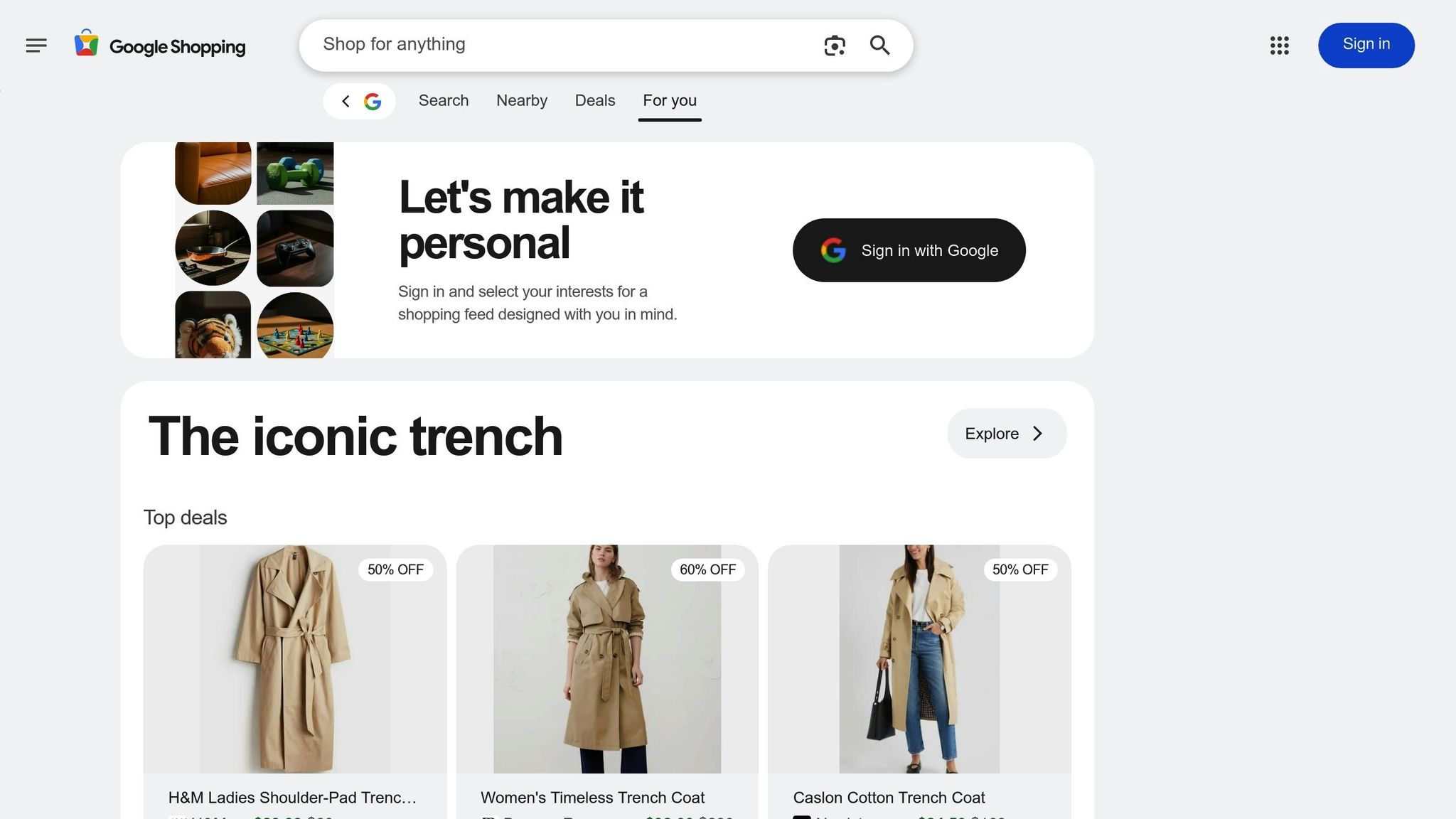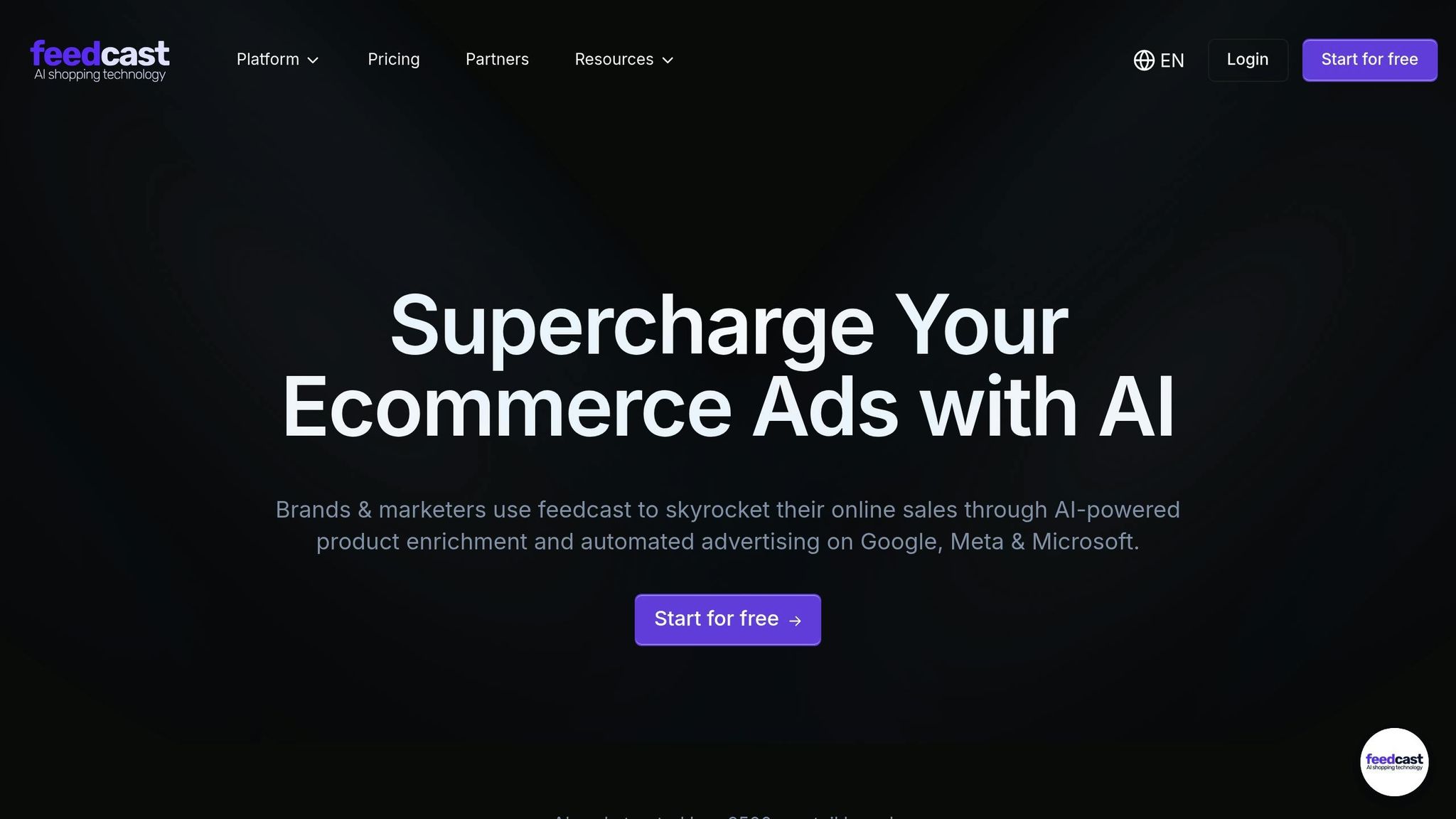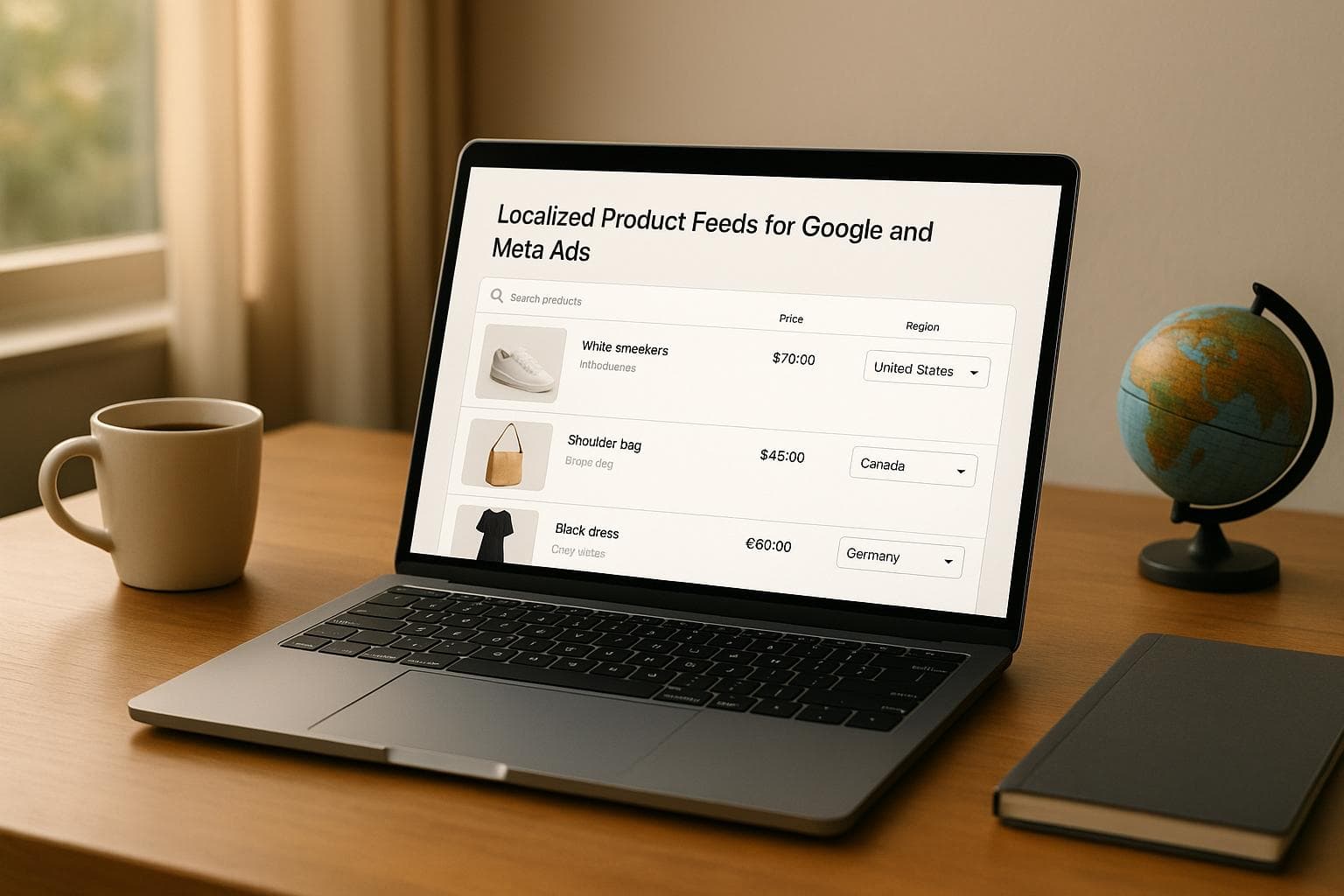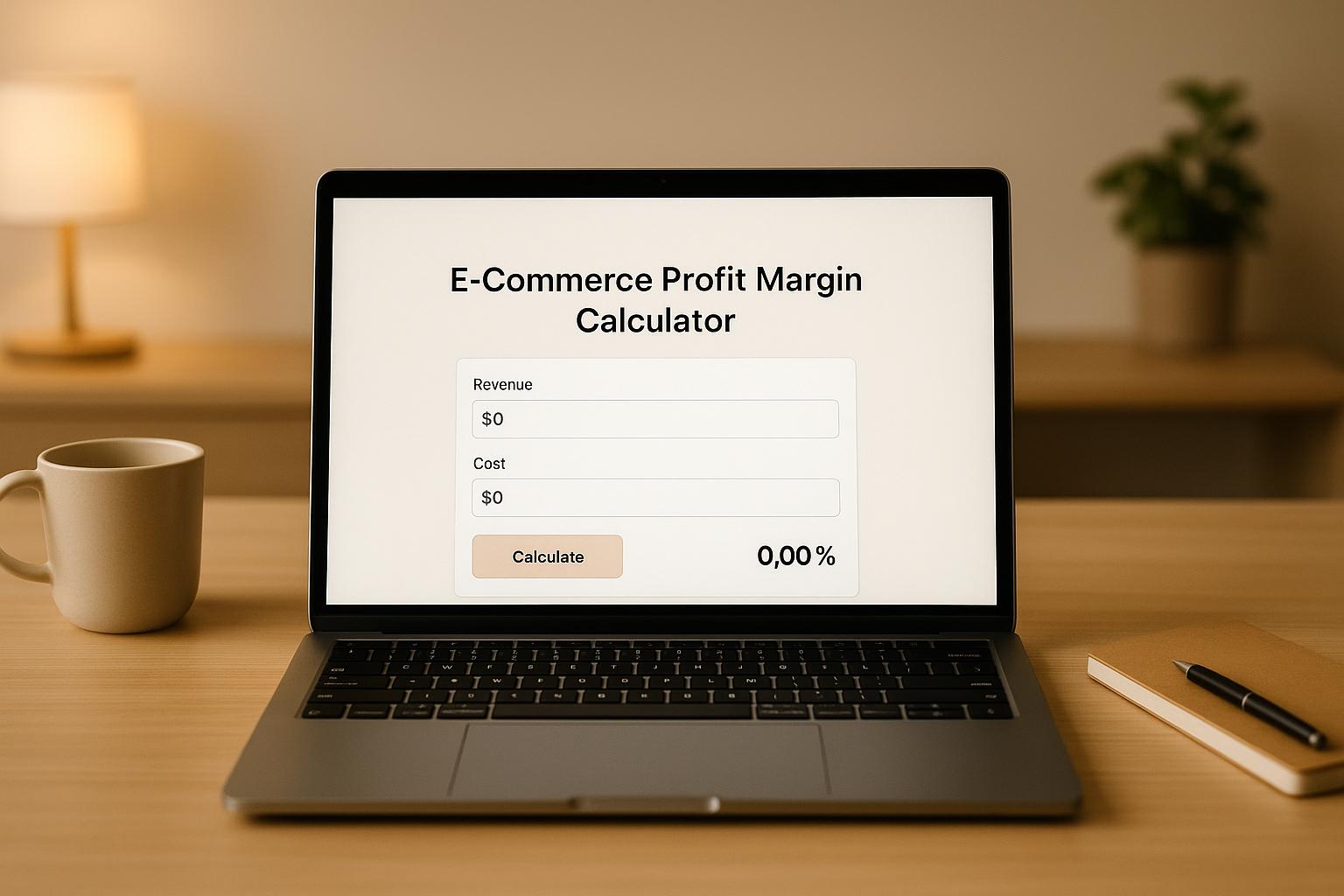Localized Product Feeds for Google and Meta Ads
Localized product feeds are essential for running successful ad campaigns on platforms like Google and Meta. These feeds adjust details such as pricing, measurements, currency, and terminology to match the preferences of specific regions, like the U.S. This approach ensures your ads feel relevant and trustworthy to local shoppers, improving click-through rates and conversions.
Key Takeaways:
- What are localized feeds? Product catalogs tailored to regional preferences (e.g., $ for currency, inches/pounds for measurements, and MM/DD/YYYY for dates).
- Why do they matter? They create a relatable shopping experience, boosting ad performance and customer trust.
- Where are they used? Google Merchant Center and Meta platforms (Facebook, Instagram) rely on them for dynamic and location-specific ads.
- How to manage them? Use centralized data systems, automation tools, and regular updates to ensure accuracy and compliance.
Localized feeds make your ads more effective by aligning with regional expectations, but managing them can be challenging. Tools like Feedcast help streamline this process by centralizing data, automating updates, and providing real-time analytics.
Key Components of Localized Product Feeds
Using Region-Specific Keywords and Descriptions
Incorporating region-specific keywords and descriptions helps align your product feed with local search habits. This approach not only targets what people in a specific area are searching for but also makes your content and meta tags more relevant to them[1]. Additionally, tailoring your feed by factoring in regional pricing and product availability ensures it resonates even more with the local audience.
Adding Multiple Countries in Google Shopping Listings with Multi-Feed Native Language and Currency

Best Practices for Optimizing Localized Feeds on Google and Meta
Optimizing feeds for the US market requires more than just translation. The most effective campaigns blend centralized data management, smart automation, and careful compliance monitoring to ensure success.
Centralize and Standardize Product Data
Keeping all product data in one place ensures consistency across platforms. When you centralize updates - like pricing changes, stock availability, or product descriptions - they automatically sync with both Google and Meta campaigns, eliminating the need for manual adjustments[2][5].
For US campaigns, it's critical to format data using American conventions. This means using US currency ($1,234.56), the MM/DD/YYYY date format, and imperial measurements. Additionally, adopt US spelling - "color" instead of "colour" and "optimize" instead of "optimise"[3][5]. These details help establish that your products are tailored for the US market, both to potential customers and the platforms themselves.
Regional targeting is another key element. For example, state-specific shipping zones, local tax rates, and product variations should all be included in your centralized system. This avoids advertising products in areas where they aren’t available. Once your data is standardized, automation tools can further enhance your feeds for better performance.
Use Automation and AI for Feed Optimization
Managing feeds manually becomes overwhelming when targeting multiple US regions. This is where automation and AI tools come in. Platforms like Feedcast.ai simplify the process by automatically enriching product titles, descriptions, and attributes with keywords specific to different regions[4]. These tools can even generate ad copy tailored to US audiences and flag potential feed errors before they lead to campaign issues.
Automation also helps you keep up with seasonal trends and regional preferences. For instance, emphasizing "Made in USA" for domestically produced goods or highlighting "Ships from California" for West Coast inventory can improve your relevance scores.
The time savings are huge. Instead of manually updating thousands of product details across platforms, AI-driven tools handle these updates continuously. This frees your team to focus on broader strategies rather than routine data management.
Maintain Data Accuracy and Compliance
Even with centralized management and automation, keeping your data accurate and compliant is critical. Platforms like Google require product data to be updated every 24 hours to remain eligible for Shopping ads[7]. Missing this window could lead to disapprovals and campaign disruptions. Automated scheduling ensures that inventory levels, pricing, and promotions are updated on time for both Google and Meta.
Compliance involves more than just timely updates. Each platform has specific US campaign requirements, like proper GTIN formatting, accurate availability statuses, and pricing that matches your website exactly. Regular audits can catch errors like missing identifiers, incorrect image URLs, or policy violations[2][4].
Here’s why accuracy matters: Over 80% of shoppers research products online before visiting a store[6]. If your local inventory feeds contain outdated or incorrect information, it can hurt ad performance and damage customer trust. Shoppers expect real-time data on availability and pricing, and failing to meet this expectation can cost you sales.
To stay ahead, use monitoring tools to track policy changes and flag potential issues. Combining automated error detection with regular manual reviews is the best way to ensure your feeds are compliant and aligned with US market demands and customer expectations. This approach keeps your campaigns running smoothly and builds consumer confidence in your brand.
sbb-itb-0bd1697
How Feedcast Simplifies Feed Management

Handling localized product feeds across various platforms can quickly turn into a logistical headache, especially when catering to diverse U.S. regions with unique requirements. Feedcast takes the stress out of this process by offering a platform that combines centralized management, AI-driven optimization, and real-time analytics - all in one place.
Centralized Multi-Channel Management
Juggling multiple dashboards for platforms like Google Ads, Meta Business Manager, and others can be exhausting. Feedcast eliminates this hassle by bringing all your ad accounts together in a single dashboard. This streamlined setup makes it easier to manage campaigns across Google Shopping, Facebook, Instagram, and Microsoft Ads at the same time. For example, any updates you make are synced across all platforms instantly.
Feedcast also integrates seamlessly with major e-commerce systems like Shopify, WooCommerce, and PrestaShop. It supports file formats such as Google Sheets, CSV, and XML, so you can keep your current workflow intact - no matter how large your inventory is.
AI-Powered Product Feed Optimization
Beyond centralizing your feeds, Feedcast takes things further by using AI to enhance them. Its AI technology automatically analyzes and improves product feed data, increasing visibility on all advertising platforms [9]. On top of that, it taps into advanced targeting tools from Google and Meta, helping you connect with potential buyers more effectively [8].
Real-Time Analytics for Regional Campaigns
Understanding how your localized campaigns perform in different areas is key to fine-tuning your strategy. Feedcast delivers a unified dashboard that tracks performance metrics across all connected channels in real time. The platform breaks down data by region, allowing you to spot trends and make adjustments as needed.
Additionally, Feedcast’s reporting system keeps an eye on feed health. It flags issues like policy violations or pricing errors early, so you can address them before they impact your campaigns. This data-driven approach ensures your localized feeds are always optimized for better results.
Common Challenges in Localized Feed Optimization
Managing localized product feeds can feel like juggling too many balls at once. Between technical hurdles, platform-specific rules, and the constant need to keep everything updated, it’s easy to see how things can go off track. Understanding these challenges upfront can help you create better strategies and avoid common mistakes.
Managing Multiple Regions and Currencies
Handling feeds for different U.S. regions isn’t just about listing products - it’s a complex process. Pricing, shipping costs, and product availability often vary by location. For example, a retailer might price winter coats higher in Minnesota than in Florida, or restrict certain products to specific states due to shipping limitations.
Then there’s the issue of taxes. Sales tax rates differ widely across states - from 0% in places like Delaware and Montana to over 10% in some parts of California. Your feeds need to reflect these differences accurately, or you risk compliance issues and customer dissatisfaction.
As your product catalog grows, managing all these variables manually becomes nearly impossible. Updating hundreds or even thousands of products across multiple regions while maintaining accuracy can eat up time and resources. This is where automation isn’t just helpful - it’s critical to keeping everything running smoothly.
Meeting Platform Requirements
On top of managing data, each platform has its own unique requirements for product feed formatting. Google and Meta, for instance, regularly update their guidelines. What worked last month might suddenly cause disapprovals today.
Policy compliance is another headache. Google’s misrepresentation policy demands accurate pricing and product descriptions, while Meta enforces strict rules on prohibited and restricted content. A single violation could pause your campaigns entirely.
And let’s not forget data quality standards. Platforms increasingly rely on machine learning to evaluate product feeds, and issues like missing images, incomplete descriptions, or inconsistent formatting can hurt your visibility - or worse, get your feed disapproved.
Keeping up with these ever-changing requirements is tough. Platform documentation is often dense and technical, and updates aren’t always communicated clearly or in advance. For busy marketers, staying compliant without automation is a daunting task.
Keeping Data Fresh Across Channels
In e-commerce, product information is constantly changing. Prices fluctuate, inventory levels shift, new products launch, and seasonal items come and go. Keeping all this information synchronized across Google, Meta, and other platforms is a major challenge.
Inventory synchronization is especially crucial. Imagine a customer clicks on an ad for a product that’s already out of stock. Not only does this waste your ad spend, but it also frustrates the customer and can hurt your brand’s reputation - not to mention your platform quality scores. Similarly, price updates need to be reflected quickly across all channels, especially during flash sales or when responding to competitors’ pricing changes.
Product catalog updates add another layer of complexity. Whether you’re discontinuing a product, adding new variants, or updating descriptions, these changes need to be reflected everywhere. If they aren’t, you could end up promoting items that no longer exist or showing outdated information.
Each platform has its own refresh schedule, which complicates things further. Google Shopping, for example, allows real-time updates through its Content API, but other platforms might not offer the same flexibility. Coordinating these timelines while maintaining consistency across channels requires careful planning - and often, automated tools.
As your catalog grows and you expand to more platforms, these challenges only multiply. What starts as a manageable task can quickly spiral into a full-time job, pulling your focus away from more strategic marketing efforts.
Conclusion: Growing Your Business with Localized Product Feeds
Localized product feeds are a game-changer for e-commerce businesses looking to expand their reach across U.S. markets. By tailoring product data to specific regions, you’re not just improving ad performance - you’re creating a more personalized shopping experience. Customers are more likely to engage when they see products priced in dollars, described in terms they understand, and available in their local area.
Of course, managing the logistics of regional campaigns can feel daunting. That’s where the right tools make all the difference.
Feedcast takes the hassle out of the process. It centralizes your advertising efforts across multiple channels, automates feed optimization, and ensures your product data is formatted correctly, enriched with regional keywords, and always up to date.
With automated, real-time updates, you can avoid inventory mismatches and pricing errors. Plus, the analytics tools we’ve discussed earlier make it easy to refine your strategy, helping you focus on what works best - without wasting time or resources.
FAQs
How can localized product feeds enhance ad performance on Google and Meta platforms?
Localized product feeds can significantly enhance ad performance on platforms like Google and Meta by customizing campaigns for specific regions. This approach lets businesses connect with local customers in a more meaningful way, boosting both relevance and engagement. For instance, displaying real-time product availability in nearby stores makes ads more practical and timely, which can lead to higher conversion rates.
Geotargeting through these localized feeds further ensures that your ads reach the right audience in the right location. This not only increases the relevance of your ads but also makes better use of your ad budget, helping you engage local customers effectively and drive both online and in-store sales.
What challenges come with managing localized product feeds, and how can tools like Feedcast help simplify the process?
Managing localized product feeds can feel like juggling too many balls at once. You need to ensure accurate product data across multiple channels, tweak details to fit regional preferences, and handle language or cultural differences. All of this adds up to more manual work and a greater chance of mistakes slipping through.
That’s where automation tools like Feedcast come in. By centralizing feed management and using AI to handle updates and enhance product data, Feedcast takes the heavy lifting off your plate. The result? Your feeds stay consistent, precise, and customized for each region - saving you time and boosting both ad performance and localization quality.
Why is it important to ensure accurate and compliant data in localized product feeds, and what happens if you don't?
Accurate and properly localized product feed data plays a crucial role in running successful advertising campaigns. When your product information aligns with platform standards, resonates with your target audience, and adheres to local regulations, your ads are more likely to perform well and earn customer trust.
On the flip side, inaccurate or non-compliant data can cause serious setbacks. Poor data quality may lead to low ad visibility, increased cart abandonment, and fewer conversions. Worse yet, failing to meet advertising policies or legal requirements can result in penalties, account suspensions, or even fines. These challenges not only hurt your ROI but can also damage your brand's reputation.
Geoffrey G.




